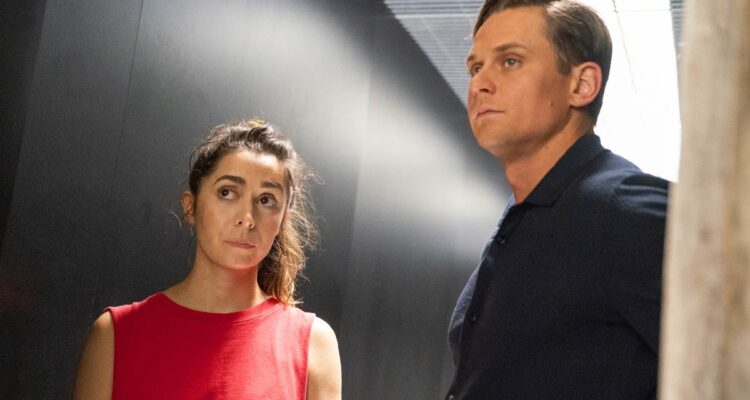Given our current scorching discourse on physical female autonomy — or lack thereof — is there anything more bleakly dystopian than the idea of a chip implanted inside a woman’s head so a Silicon Valley douche can keep tabs on her? In Season One of HBO Max’s “Made For Love,” this premise offered a harsh condemnation of men, toxic male culture, and the need for control from the fat-headed Elon Musks of the world. Hazel Green (Cristin Milioti), on the run from her sociopathically controlling husband, Byron Gogo (Billy Magnussen), revealed — during a speech at a party, no less — that he had clandestinely embedded her with his Made For Love chip, a despicable brain chip for harvesting “emotional data.”
‘Hacks’ Season 2 Trailer: HBO Max’s Emmy-Winning Comedy With Jean Smart Returns May 12
At the end of the season, Hazel chooses to return to Byron to get her father Herbert’s (Ray Romano) terminal cancer treated. The question for this season, however, is who’s scamming who? Hazel has laid out an overt agenda for Byron in the first four episodes, with clearly defined boundaries for her transactional return to his world. And Byron acts as if he wants her enough to attempt a relationship on her terms, which is its own particular brand of dysfunction. Layered under that are hidden motivations.
For Hazel, it’s a mission to get information about the Hub, Byron’s high-tech utopia, and an inability to decide if she wants to work with the government and help them bring Byron down—and have some liaisons with an agent named Jay (Sarunas J. Jackson). And some part of her still wants to know what being the wife of Byron Gogol is like, enjoying, despite herself, the access to his power, technology, and money (if not the clothes).
In the first four episodes of “Made for Love,” many moments feel like stunts. Herbert’s synthetic life partner Diane, whose face was modeled on “Made for Love” author and showrunner Alissa Nutting, returns; Nutting makes a cameo as a woman in the Hub on which the doll is based. Working undercover, Jay joins the Hub as the only employee to whom Zelda the dolphin will speak. Sure, it’s the same dolphin who helped Hazel escape, but there’s also more than a gentle hint that the book’s dolphin sex plotline might finally hit the screen and be just as weird as it sounds. “Made for Love” also hints that sex dolls based on real people are canon, with a woman complaining about her ex-boyfriend’s doll being her replica.
Herbert also figures out the agreement — quickly and with very little skullduggery — and opts to keep quiet. He does it for the cancer treatments, and because it turns out, the Hub can be a lovely place to lay on the beach or play a round of golf without the world’s stresses on your shoulders. With the layers of technologically operated brain control out of the picture, the cast of characters are left to struggle with the decisions and compromises they make entirely on their own.
Showrunners Christina Lee and Nutting double down in the show’s POV by creating a sci-fi world seen through the female gaze. It’s there when they lean into how unsettling a patriarchal society can feel by examining the seedy side of sexuality using those real dolls and Byron’s obsessive love. And to make the layers more complex and unsettling, Byron uploads his and Hazel’s consciousnesses into a digital network where they fall in love all over again—and ultimately want to become embodied, believing they are more deserving because they’re doing a better job of connecting than their living counterparts.
Season two successfully creates an equally elaborate set of scenarios that push each character into facing Hobson’s Choice, or the choice you make when you have no choice at all. This series is excellent at entertaining even as the audience waits for an enviable tragic ending, from which any escape was always impossible. [B+]

